 Search by Keyword
Sign Up Below for our MONTHLY BEATLES TRIVIA QUIZ!
|
"I NEED YOU"
(George Harrison)
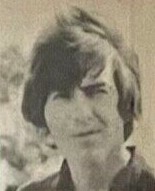 Though new to songwriting, George Harrison was able to proudly offer two new compositions for possible inclusion in The Beatles' second motion picture, eventually to be titled “Help!” With eleven songs submitted for consideration and seven spots open, odds were quite good that George would succeed in getting at least one of his songs onto the big screen. Though new to songwriting, George Harrison was able to proudly offer two new compositions for possible inclusion in The Beatles' second motion picture, eventually to be titled “Help!” With eleven songs submitted for consideration and seven spots open, odds were quite good that George would succeed in getting at least one of his songs onto the big screen.
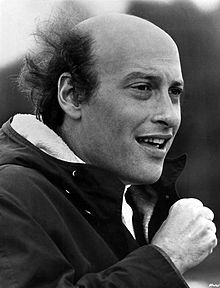 And that’s exactly what happened. Director Richard Lester chose songs that he thought would work in the film and George’s “I Need You” proved suitable. As he had done in their first movie “A Hard Day’s Night,” Richard Lester decided that a vocal contribution from George would show a degree of equality within the abilities of the group. “I’m Happy Just To Dance With You” showed off his vocal talents in the previous film, but it was a Lennon / McCartney composition. This time around, both of his offerings were his own compositions, “You Like Me Too Much” being the other song. And that’s exactly what happened. Director Richard Lester chose songs that he thought would work in the film and George’s “I Need You” proved suitable. As he had done in their first movie “A Hard Day’s Night,” Richard Lester decided that a vocal contribution from George would show a degree of equality within the abilities of the group. “I’m Happy Just To Dance With You” showed off his vocal talents in the previous film, but it was a Lennon / McCartney composition. This time around, both of his offerings were his own compositions, “You Like Me Too Much” being the other song.
 Proof of how proud he was of having an original composition in the film is in the closing credits. During The Beatles goofy vocal rendition of “The Barber Of Seville,” George verbally reads the credit to his song, “’I Need You’ by George Harrison” when those words appear in print. Since this was only his second original song to have been officially recorded by The Beatles, George Harrison had every reason to be proud. Proof of how proud he was of having an original composition in the film is in the closing credits. During The Beatles goofy vocal rendition of “The Barber Of Seville,” George verbally reads the credit to his song, “’I Need You’ by George Harrison” when those words appear in print. Since this was only his second original song to have been officially recorded by The Beatles, George Harrison had every reason to be proud.
Songwriting History
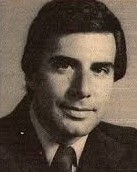 George never appeared to have commented about “I Need You” in any interviews, so the songwriting history is left to speculation. During an interview in 1965, as contained in the book “Ticket To Ride” by journalist Larry Kane, he gives a hint as to his songwriting pattern. “If I get something going, then I’ll tape it. I’ll leave it for about five weeks, then I’ll suddenly remember. Then I add a bit more to it, so it will probably take me about three months before I finish one song.” George never appeared to have commented about “I Need You” in any interviews, so the songwriting history is left to speculation. During an interview in 1965, as contained in the book “Ticket To Ride” by journalist Larry Kane, he gives a hint as to his songwriting pattern. “If I get something going, then I’ll tape it. I’ll leave it for about five weeks, then I’ll suddenly remember. Then I add a bit more to it, so it will probably take me about three months before I finish one song.”
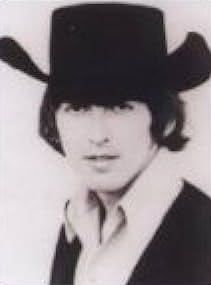 Using this as a gauge, we can reliably say that George wrote “I Need You” in the three month time period of December, 1964 through February, 1965, which is just before The Beatles recorded the song. Their touring schedule during a good portion of this time was focused in their current home base of London while they were presenting their month-long production “Another Beatles Christmas Show.” This would have given ample opportunity for George to refine the details of this song. Using this as a gauge, we can reliably say that George wrote “I Need You” in the three month time period of December, 1964 through February, 1965, which is just before The Beatles recorded the song. Their touring schedule during a good portion of this time was focused in their current home base of London while they were presenting their month-long production “Another Beatles Christmas Show.” This would have given ample opportunity for George to refine the details of this song.
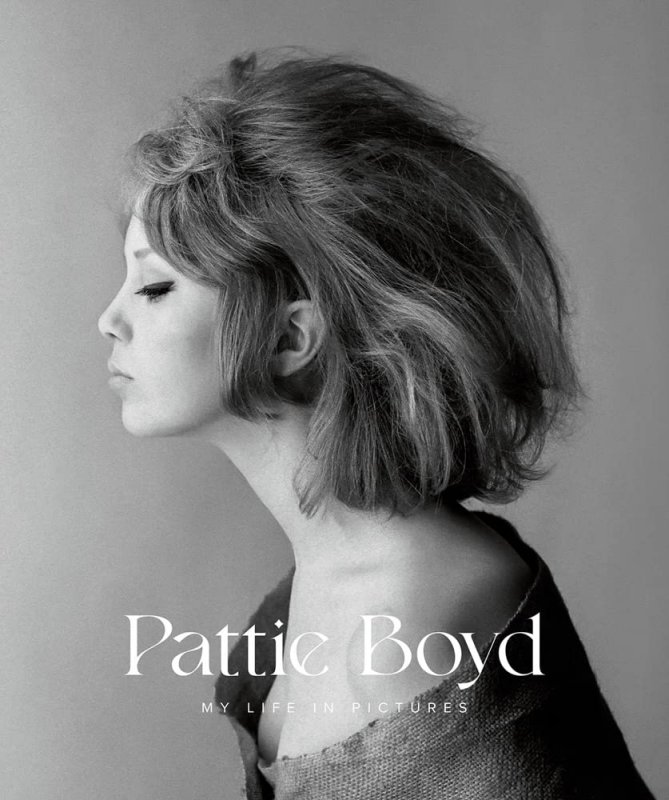 Some writers claim that the song was written in late February and early March while The Beatles were filming the movie “Help!” in the Bahamas. They say that he was missing his current girlfriend Pattie Boyd, which resulted in the lyrical content of "I Need You." There’s only one problem with this theory: The song was already recorded before they left for the Bahamas! These theorists also fail to realize that the song is about a girlfriend breaking up with the singer. It seems quite improbable that Pattie Boyd told George that she ‘don’t want his lovin’ anymore’ just before he left for the Bahamas! Some writers claim that the song was written in late February and early March while The Beatles were filming the movie “Help!” in the Bahamas. They say that he was missing his current girlfriend Pattie Boyd, which resulted in the lyrical content of "I Need You." There’s only one problem with this theory: The song was already recorded before they left for the Bahamas! These theorists also fail to realize that the song is about a girlfriend breaking up with the singer. It seems quite improbable that Pattie Boyd told George that she ‘don’t want his lovin’ anymore’ just before he left for the Bahamas!
 EMI Studios, London
|
Recording History
 “I Need You” was debuted during their first recording session for 1965, this being on February 15th at EMI Studio Two. This was the very first of six consecutive days of sessions intended to produce songs for inclusion in their upcoming second motion picture. The earlier of two sessions from this day, from 2:30 to 5:45 pm, saw their new song “Ticket To Ride” started and finished, while the later session, from 7 to 10:30 pm, was utilized to start two new songs. The first two-and-a-half hours were spent on Paul’s new song “Another Girl,” and then at about 8:30 pm they began work on George’s “I Need You.” “I Need You” was debuted during their first recording session for 1965, this being on February 15th at EMI Studio Two. This was the very first of six consecutive days of sessions intended to produce songs for inclusion in their upcoming second motion picture. The earlier of two sessions from this day, from 2:30 to 5:45 pm, saw their new song “Ticket To Ride” started and finished, while the later session, from 7 to 10:30 pm, was utilized to start two new songs. The first two-and-a-half hours were spent on Paul’s new song “Another Girl,” and then at about 8:30 pm they began work on George’s “I Need You.”
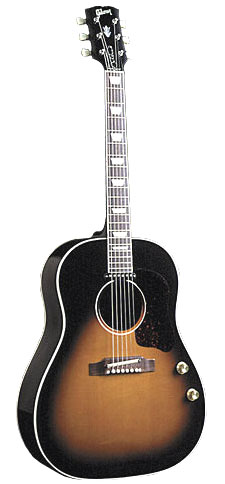 The Beatles spent the last two hours of the session recording a rhythm track for George’s new song. "Take one" of "I Need You," which was included in 2025's "Anthology 4," shows us the initial arrangement they intended to use for the recording. Track one of the four-track tape contains Paul on bass and Ringo playing his full drum kit, track two featuring George's acoustic guitar (Gibson J-160E "Jumbo"), while track three contains George's lead vocal and John shaking maracas. After George instructs his bandmates "not too slow" and then "not too fast," an excellent complete run through of the song is set to tape, the only real flaws apparent being Paul's flubbed bass work toward the end of the first verse and incessant laughter between Paul and John in the background during the last half of the recording, this making George chuckle as well as the song concludes. Knowing that this take could not be used, George performs a standard campy ending on guitar, followed by John asking, "that's it?" It appears obvious that the other band members were just then being introduced to George's song during this recording. The Beatles spent the last two hours of the session recording a rhythm track for George’s new song. "Take one" of "I Need You," which was included in 2025's "Anthology 4," shows us the initial arrangement they intended to use for the recording. Track one of the four-track tape contains Paul on bass and Ringo playing his full drum kit, track two featuring George's acoustic guitar (Gibson J-160E "Jumbo"), while track three contains George's lead vocal and John shaking maracas. After George instructs his bandmates "not too slow" and then "not too fast," an excellent complete run through of the song is set to tape, the only real flaws apparent being Paul's flubbed bass work toward the end of the first verse and incessant laughter between Paul and John in the background during the last half of the recording, this making George chuckle as well as the song concludes. Knowing that this take could not be used, George performs a standard campy ending on guitar, followed by John asking, "that's it?" It appears obvious that the other band members were just then being introduced to George's song during this recording.
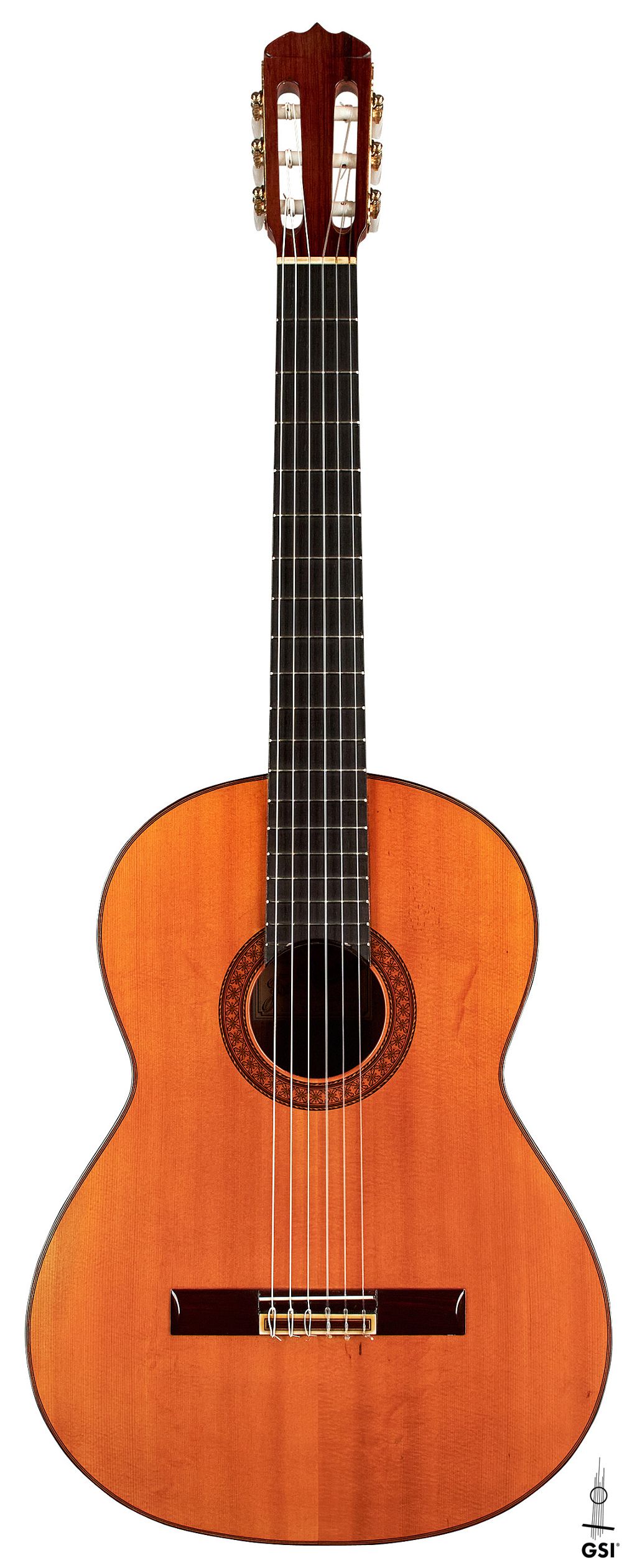 It then becomes apparent that Lennon wanted to do something different for a change on this song. According to George Martin's handwritten notes, which were discovered decades later and then displayed at an exhibit at "The Beatles Story" in Liverpool, the instrumentation for the remaining takes of "I Need You" (takes two through five) was George on a nylon string Jose Ramirez guitar, Paul on bass, John on "offbeat drums" (hitting the snare drum on each off-beat) and Ringo tapping the back of the Gibson J-160E acoustic guitar. According to the above mentioned notes, all of these elements at this point was recorded onto track one of the four-track tape, George providing a guide vocal on track two. It then becomes apparent that Lennon wanted to do something different for a change on this song. According to George Martin's handwritten notes, which were discovered decades later and then displayed at an exhibit at "The Beatles Story" in Liverpool, the instrumentation for the remaining takes of "I Need You" (takes two through five) was George on a nylon string Jose Ramirez guitar, Paul on bass, John on "offbeat drums" (hitting the snare drum on each off-beat) and Ringo tapping the back of the Gibson J-160E acoustic guitar. According to the above mentioned notes, all of these elements at this point was recorded onto track one of the four-track tape, George providing a guide vocal on track two.
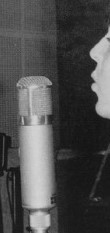 After "take five" was deemed to be the best, The Beatles took to performing some overdubs before the evening concluded. Onto to track three, George recorded a proper lead vocal with Paul joining in with harmonies on the last phrase of each verse, which usually was the phrase "I need you." However, at the end of the second verse, the words were "you told me," which Paul hesitated on, no doubt because he was still a bit unfamiliar with the lyrics. Onto track four of the tape was overdubbed George and Paul double-tracking these vocals while Ringo tapped out a beat on a cowbell during the bridges of the song. Although the notes say that the session ended at 9:25 pm, the evening came to a complete end at 10:30 with more overdubs planned for a later session. After "take five" was deemed to be the best, The Beatles took to performing some overdubs before the evening concluded. Onto to track three, George recorded a proper lead vocal with Paul joining in with harmonies on the last phrase of each verse, which usually was the phrase "I need you." However, at the end of the second verse, the words were "you told me," which Paul hesitated on, no doubt because he was still a bit unfamiliar with the lyrics. Onto track four of the tape was overdubbed George and Paul double-tracking these vocals while Ringo tapped out a beat on a cowbell during the bridges of the song. Although the notes say that the session ended at 9:25 pm, the evening came to a complete end at 10:30 with more overdubs planned for a later session.
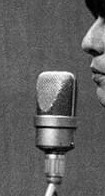 On the next day, February 16th, 1965, they all picked up where they left off, entering EMI Studio Two at 2:30 pm to record more overdubs onto “I Need You.” A decision was first made to re-record George and Paul's double-tracked vocals onto track four while also including John and Paul's "aahs" during parts of the verses and on both bridges. With this accomplished, they recorded over Harrison's guide vocal on track two with more "aah" harmonies from John and Paul, Ringo playing cowbell (replacing what he previously performed on track four which was now erased) and George's lead guitar work throughout the song. Harrison played his Rickenbacker 12-string guitar while using a foot-controlled volume pedal that was hooked up to the volume of the guitar. The notes specify that at precisely 4:35 pm the song had been deemed complete and they began working to finish the other unfinished song from the day before, namely “Another Girl.” The later session on this day was used to record the song “Yes It Is,” which also featured George’s volume pedal. On the next day, February 16th, 1965, they all picked up where they left off, entering EMI Studio Two at 2:30 pm to record more overdubs onto “I Need You.” A decision was first made to re-record George and Paul's double-tracked vocals onto track four while also including John and Paul's "aahs" during parts of the verses and on both bridges. With this accomplished, they recorded over Harrison's guide vocal on track two with more "aah" harmonies from John and Paul, Ringo playing cowbell (replacing what he previously performed on track four which was now erased) and George's lead guitar work throughout the song. Harrison played his Rickenbacker 12-string guitar while using a foot-controlled volume pedal that was hooked up to the volume of the guitar. The notes specify that at precisely 4:35 pm the song had been deemed complete and they began working to finish the other unfinished song from the day before, namely “Another Girl.” The later session on this day was used to record the song “Yes It Is,” which also featured George’s volume pedal.
 The mono mix of “I Need You” was created two days later on February 18th, 1965 in the control room of EMI Studio Two by George Martin and engineers Norman Smith and Ken Scott. This mix appeared in the movie as well as the mono version of the British “Help!” album. The mono mix of “I Need You” was created two days later on February 18th, 1965 in the control room of EMI Studio Two by George Martin and engineers Norman Smith and Ken Scott. This mix appeared in the movie as well as the mono version of the British “Help!” album.
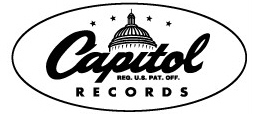 The stereo mix of "I Need You" was created on February 23rd, 1965 in the control room of EMI Studio Two by Norman Smith and 2nd engineer Malcolm Davies, George Martin not feeling he was needed for this relatively unnecessary task (since mono mixes were deemed the priority). This mix made it on the stereo versions of both the British and American “Help!” albums. The mono version of the US album also utilized this mix, Capitol Records creating a “type B” mono mix by combining both channels of the stereo mix into one channel. Therefore, the true mono mix of this song, as similar as it may be, was only to be heard in the US on early copies of the movie until many decades later. The stereo mix of "I Need You" was created on February 23rd, 1965 in the control room of EMI Studio Two by Norman Smith and 2nd engineer Malcolm Davies, George Martin not feeling he was needed for this relatively unnecessary task (since mono mixes were deemed the priority). This mix made it on the stereo versions of both the British and American “Help!” albums. The mono version of the US album also utilized this mix, Capitol Records creating a “type B” mono mix by combining both channels of the stereo mix into one channel. Therefore, the true mono mix of this song, as similar as it may be, was only to be heard in the US on early copies of the movie until many decades later.
 Not to be forgotten is the 1986 stereo mix created by George Martin for the 1987 release of the "Help!" album on compact disc. Then, sometime during 2025, his son Giles Martin, with engineers Joe Wyatt and Greg McAllister, created a mix of "take one" of "I Need You" to be included on "Anthology 4," this compilation being released in various editions in 2025 as detailed below. Not to be forgotten is the 1986 stereo mix created by George Martin for the 1987 release of the "Help!" album on compact disc. Then, sometime during 2025, his son Giles Martin, with engineers Joe Wyatt and Greg McAllister, created a mix of "take one" of "I Need You" to be included on "Anthology 4," this compilation being released in various editions in 2025 as detailed below.
Song Structure and Style
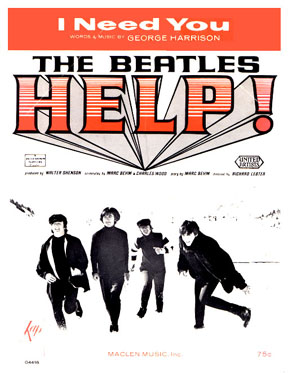 George follows the standard ‘verse/ verse/ bridge/ verse’ format for this song, as well established by Lennon and McCartney (and many before them). With a repeat of the bridge and final verse, we end up with a usual aababa structure without the need for a solo of any kind. As the group's primary soloist, Harrison wisely realized that an added instrumental section would only hamper the flow of the song. George follows the standard ‘verse/ verse/ bridge/ verse’ format for this song, as well established by Lennon and McCartney (and many before them). With a repeat of the bridge and final verse, we end up with a usual aababa structure without the need for a solo of any kind. As the group's primary soloist, Harrison wisely realized that an added instrumental section would only hamper the flow of the song.
A simple two-measure introduction gets the ball rolling and establishes the home key of A major. Basically, the acoustic rhythm guitar from the rhythm track and overdubbed electric volume pedal guitar are the only things heard in this short intro. George begins his guitar chord/riff, which is heard in various forms three times in each verse, directly on the downbeat of this introduction. Although a little rushed, it is emphasized exactly as it will be in the conclusion of the song. Paul introduces his bass guitar in the second half of the second measure as a segue into the first verse.
 The first verse is an unusual fourteen measures long because the last of the four melodic phrases that make up this verse is cut in half. The simple subdued drums kick in on the downbeat of this section as do George’s lead vocals, which pronounce the first line as “you don’t re-o-lize how much I need you.” Each melodic vocal phrase ends with the first two notes of the “four chord/riff” (for example, on the words “need you”) that George plays with his volume pedal guitar. If it wasn’t for the guitar finishing these phrases, the lyrics would leave us "hanging in the air," so to speak. The first verse is an unusual fourteen measures long because the last of the four melodic phrases that make up this verse is cut in half. The simple subdued drums kick in on the downbeat of this section as do George’s lead vocals, which pronounce the first line as “you don’t re-o-lize how much I need you.” Each melodic vocal phrase ends with the first two notes of the “four chord/riff” (for example, on the words “need you”) that George plays with his volume pedal guitar. If it wasn’t for the guitar finishing these phrases, the lyrics would leave us "hanging in the air," so to speak.
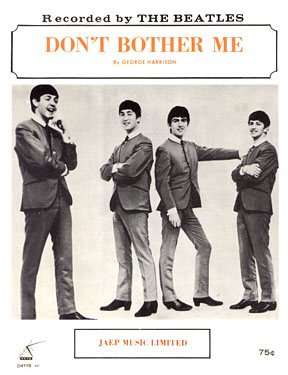 The third melodic phrase, starting with “please come on back to me,” breaks away from the home key and raises the emotional level of the song as well as the range of notes being sung. Another difference is the introduction of background harmonies on this section which adds a nice backwash to the arrangement. The final phrase actually only consists of three words, “I need you,” which Paul harmonizes on. Once again, we see the established Beatles pattern of ending the verses with the title of the song, driving it home for all listeners as George had already caught on with for 1963’s “Don’t Bother Me.” The third melodic phrase, starting with “please come on back to me,” breaks away from the home key and raises the emotional level of the song as well as the range of notes being sung. Another difference is the introduction of background harmonies on this section which adds a nice backwash to the arrangement. The final phrase actually only consists of three words, “I need you,” which Paul harmonizes on. Once again, we see the established Beatles pattern of ending the verses with the title of the song, driving it home for all listeners as George had already caught on with for 1963’s “Don’t Bother Me.”
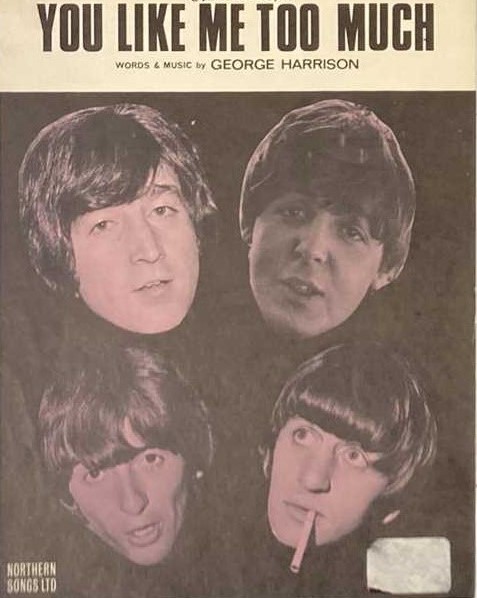 After a structurally identical second verse (with George’s interesting lyrical flow of “a thing or two to tell me”), we enter the bridge. We can see here a pattern developing in these current "Harrisongs" in the form of continuing a thought, and the actual sentence, from the verse right into the bridge. In this case, George starts a new thought by singing “you told me” at the end of the verse and then finishes the sentence in the bridge with “oh, yes, you told me you don’t want my lovin’ anymore.” (See “You Like Me Too Much,” which was recorded the next day, for similar lyric writing.) After a structurally identical second verse (with George’s interesting lyrical flow of “a thing or two to tell me”), we enter the bridge. We can see here a pattern developing in these current "Harrisongs" in the form of continuing a thought, and the actual sentence, from the verse right into the bridge. In this case, George starts a new thought by singing “you told me” at the end of the verse and then finishes the sentence in the bridge with “oh, yes, you told me you don’t want my lovin’ anymore.” (See “You Like Me Too Much,” which was recorded the next day, for similar lyric writing.)
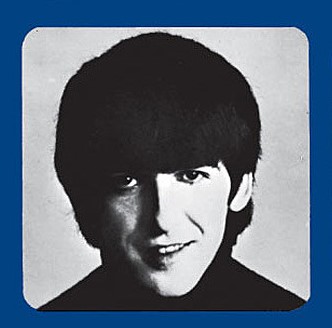 The bridge also has an unusual number of measures, this time being nine. The usual eight measures are extended by one at the end as if he needed to take a breath before the third verse began, which wasn’t the case. We can easily imagine the song flowing nicely without this extra measure, especially since it remained instrumentally unadorned. But as is the case, George Harrison apparently wanted the extra measure and, although unnecessary, it works well. The bridge also has an unusual number of measures, this time being nine. The usual eight measures are extended by one at the end as if he needed to take a breath before the third verse began, which wasn’t the case. We can easily imagine the song flowing nicely without this extra measure, especially since it remained instrumentally unadorned. But as is the case, George Harrison apparently wanted the extra measure and, although unnecessary, it works well.
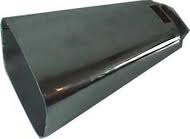 As far as arrangement goes in the bridge, we see the addition of Ringo’s cowbell throughout all nine measures as well as George, John and Paul’s background vocals. In actuality, the seventh and eighth measures of this bridge contain the gut-wrenching emotional highlight of the song, which was accentuated by George’s outcry “I just can’t go on anymore.” Which may be why he wanted the extra measure in the bridge, to allow this desperate proclamation to sink in, as well as to regain his composure before beginning his plea for her return. As far as arrangement goes in the bridge, we see the addition of Ringo’s cowbell throughout all nine measures as well as George, John and Paul’s background vocals. In actuality, the seventh and eighth measures of this bridge contain the gut-wrenching emotional highlight of the song, which was accentuated by George’s outcry “I just can’t go on anymore.” Which may be why he wanted the extra measure in the bridge, to allow this desperate proclamation to sink in, as well as to regain his composure before beginning his plea for her return.
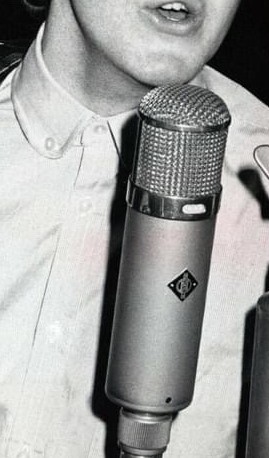 As the cowbell disappears, the third verse, structurally identical to the first two, begins. After a repeat of the bridge, this third verse is heard again but in an extended twenty-measure form to work as a fitting conclusion to the song. The final statement “I need you” is repeated identically two more times with Paul’s harmonies as the chords change strategically underneath. We then arrive at the home key of A again as we hear a repeat of the guitar chord/riff, the last chord becoming the strident final chord of the song. As the cowbell disappears, the third verse, structurally identical to the first two, begins. After a repeat of the bridge, this third verse is heard again but in an extended twenty-measure form to work as a fitting conclusion to the song. The final statement “I need you” is repeated identically two more times with Paul’s harmonies as the chords change strategically underneath. We then arrive at the home key of A again as we hear a repeat of the guitar chord/riff, the last chord becoming the strident final chord of the song.
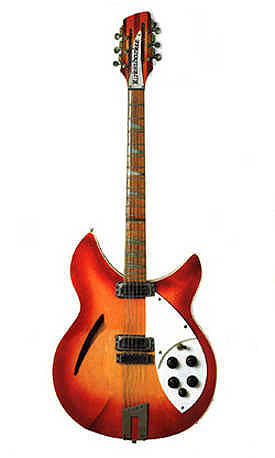 Of course, George is the primary focus of this folksy-arranged song, delivered in perfect singer / songwriter fashion. His volume pedal work, while occasionally not in perfect time, gives a weeping effect which convincingly portrays the sad lyrics. His lead vocals are also done professionally well, seeing that he has come to master the art of double-tracking with few overlapped accentuations. Of course, George is the primary focus of this folksy-arranged song, delivered in perfect singer / songwriter fashion. His volume pedal work, while occasionally not in perfect time, gives a weeping effect which convincingly portrays the sad lyrics. His lead vocals are also done professionally well, seeing that he has come to master the art of double-tracking with few overlapped accentuations.
Paul is always there to add what is necessary to make a good recording, this time jumping in with nice vocal harmonies. His bass work is done simply so as not to detract from the emotional effect of the lyrics. Being in the usual experimental mood for a song of George's, John plays rudimentary drums but keeps a steady enough beat to propel the song nicely, adding background “aahs” when required. Ringo plays no larger of a role than that of a metronome on the back of the acoustic guitar and then cowbell, but anything more than that would only have detracted from the sentiment of the song.
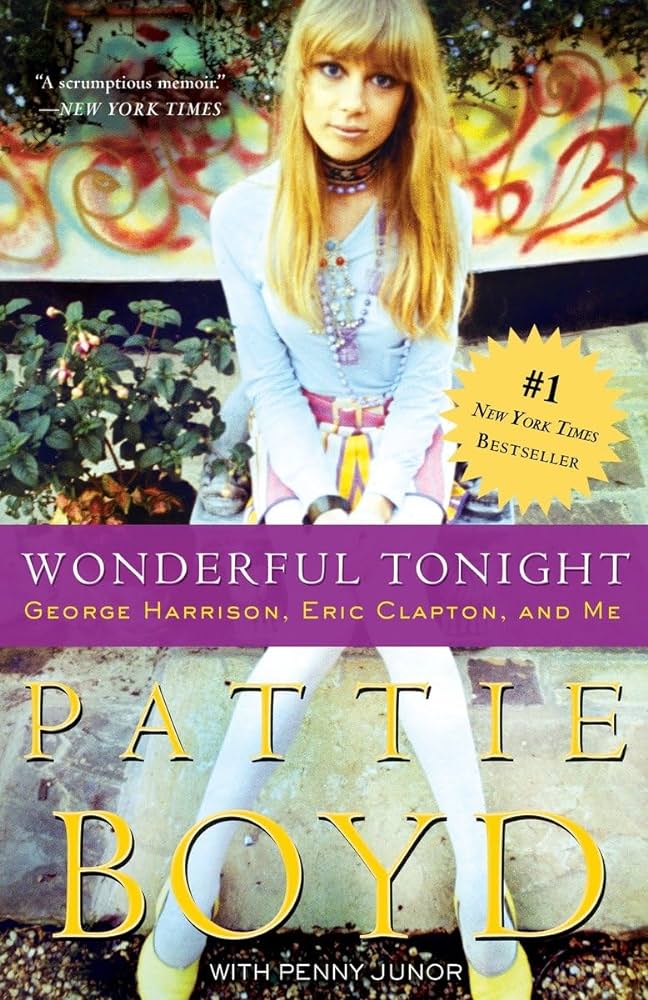 It’s somewhat perplexing that many authors explain this song away as simply a love song to girlfriend Pattie Boyd. The first two lines of the song may make you think this could be the case, but from the third line on it is obvious that the storyline focuses on George being dumped by his girl, which wasn't the case with Pattie at that time as far as we know. “Please come on back to me, I’m lonely as can be” is the true gist of the song as a whole, as explained in this verse. It’s somewhat perplexing that many authors explain this song away as simply a love song to girlfriend Pattie Boyd. The first two lines of the song may make you think this could be the case, but from the third line on it is obvious that the storyline focuses on George being dumped by his girl, which wasn't the case with Pattie at that time as far as we know. “Please come on back to me, I’m lonely as can be” is the true gist of the song as a whole, as explained in this verse.
The second verse begins to give us the intricate details of this sad fictional story, telling us how his girl “had a thing or two to tell” him, which left him “upset.” The bridge reveals what she told him, namely, “you don’t want my lovin’ anymore,” which now left him “hurt.” After proclaiming that he “just can’t go on anymore,” the third verse begins his pleading for her to “come on back and see just what you mean to me.”
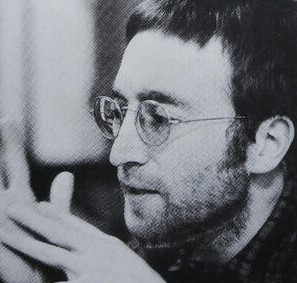 While it is possible that George was writing about a relationship struggle he was having with Pattie Boyd at the time, on the surface these lyrics appear to be George “projecting myself into a situation and writing a nice story about it,” as Lennon would explain about his own output during the early Beatles career. John and Paul may have been writing more autobiographically by this time, but George was just developing as a songwriter and was well behind his fellow band members in this category. This having been said, “I Need You” has found a definite place in the hearts of many Beatles fans because of its simply stated melancholic feel and charming delivery. While it is possible that George was writing about a relationship struggle he was having with Pattie Boyd at the time, on the surface these lyrics appear to be George “projecting myself into a situation and writing a nice story about it,” as Lennon would explain about his own output during the early Beatles career. John and Paul may have been writing more autobiographically by this time, but George was just developing as a songwriter and was well behind his fellow band members in this category. This having been said, “I Need You” has found a definite place in the hearts of many Beatles fans because of its simply stated melancholic feel and charming delivery.
American Releases
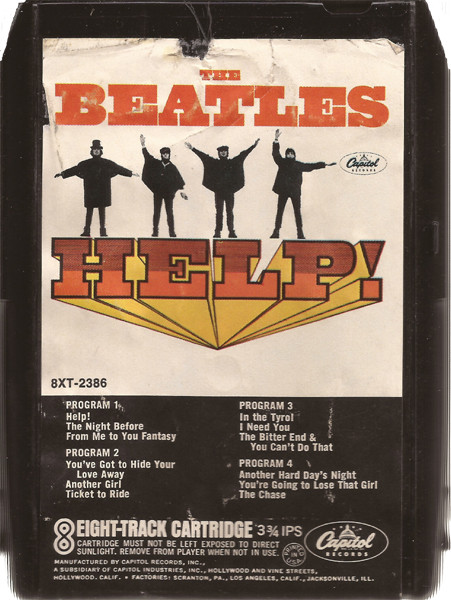 The song was first available in America on August 13th, 1965 on the “Help!” soundtrack album. Since the mono version of this album as released by Capitol Records actually contained a “type B” combination of both channels of the stereo version of the album, the original mono mix of “I Need You” was not available in the US for a long time. This soundtrack album was released on an individual compact disc on January 21st, 2014, both the mono and the stereo mixes being contained on a single CD. The song was first available in America on August 13th, 1965 on the “Help!” soundtrack album. Since the mono version of this album as released by Capitol Records actually contained a “type B” combination of both channels of the stereo version of the album, the original mono mix of “I Need You” was not available in the US for a long time. This soundtrack album was released on an individual compact disc on January 21st, 2014, both the mono and the stereo mixes being contained on a single CD.
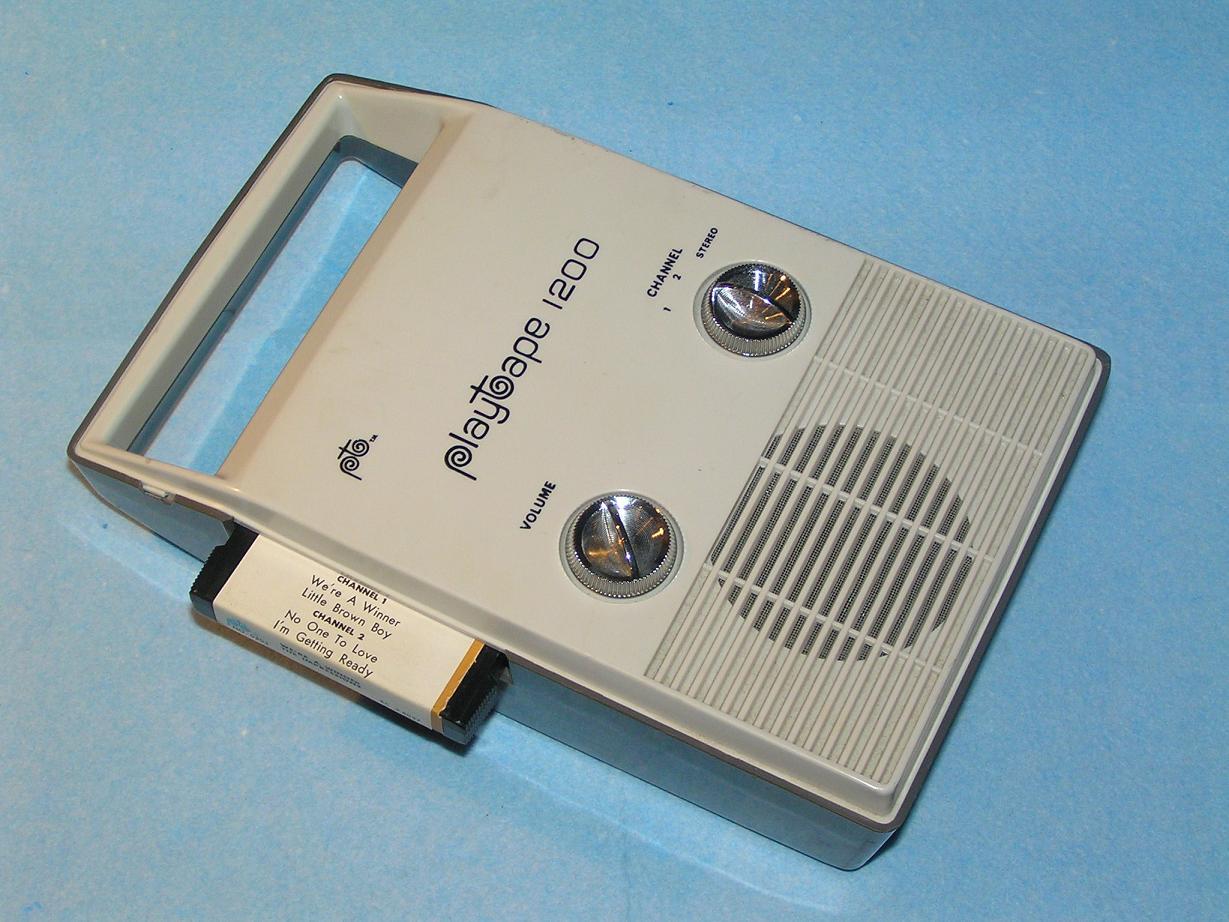 Sometime in 1967, Capitol released Beatles music on a brand new but short-lived format called "Playtapes." These tape cartridges did not have the capability to include entire albums, so two truncated four-song versions of the "Help!" Soundtrack were released in this portable format, "I Need You" being on one of these releases. These "Playtapes" are highly collectable today. Sometime in 1967, Capitol released Beatles music on a brand new but short-lived format called "Playtapes." These tape cartridges did not have the capability to include entire albums, so two truncated four-song versions of the "Help!" Soundtrack were released in this portable format, "I Need You" being on one of these releases. These "Playtapes" are highly collectable today.
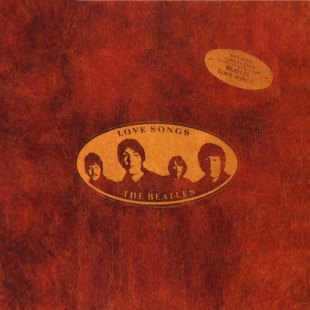 In order for George Harrison to be duly represented on the double-album compilation “Love Songs,” released on October 21st, 1977, Capitol included both his classic 1969 smash “Something” and his melancholy 1965 composition "I Need You." Interestingly, Capitol decided to add a bit more reverb to this track for this album. In order for George Harrison to be duly represented on the double-album compilation “Love Songs,” released on October 21st, 1977, Capitol included both his classic 1969 smash “Something” and his melancholy 1965 composition "I Need You." Interestingly, Capitol decided to add a bit more reverb to this track for this album.
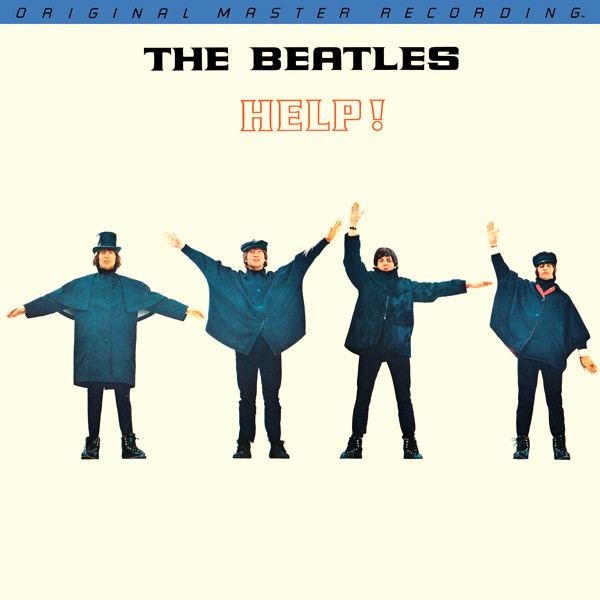 The first time the original British "Help!" album was made available in the US was the "Original Master Recording" vinyl edition released through Mobile Fidelity Sound Lab in January of 1986. This album included "I Need You" and was prepared utilizing half-speed mastering technology from the original master tape on loan from EMI. This version of the album was only available for a short time and is quite collectible today. The first time the original British "Help!" album was made available in the US was the "Original Master Recording" vinyl edition released through Mobile Fidelity Sound Lab in January of 1986. This album included "I Need You" and was prepared utilizing half-speed mastering technology from the original master tape on loan from EMI. This version of the album was only available for a short time and is quite collectible today.
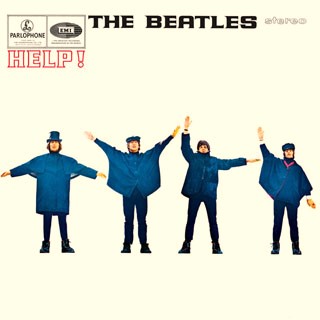 On April 30th, 1987, the long-awaited Beatles catalog was released on compact disc. The British “Help!” album was released in stereo on CD on this date, a vinyl version being released in the US on July 21st, 1987. The new 1986 George Martin stereo mix was used on both of these releases, which is virtually identical to the original 1965 Norman Smith mix. This album was then remastered and re-released on CD on September 9th, 2009, the vinyl edition coming out on November 13th, 2012. On April 30th, 1987, the long-awaited Beatles catalog was released on compact disc. The British “Help!” album was released in stereo on CD on this date, a vinyl version being released in the US on July 21st, 1987. The new 1986 George Martin stereo mix was used on both of these releases, which is virtually identical to the original 1965 Norman Smith mix. This album was then remastered and re-released on CD on September 9th, 2009, the vinyl edition coming out on November 13th, 2012.
April 11th, 2006 saw the second Capitol box set of early Beatles material released, namely “The Capitol Albums, Vol. 2.” It contained the four Capitol albums released in 1965, including the “Help!” soundtrack with all the Ken Thorne instrumentals, as well as “I Need You.”
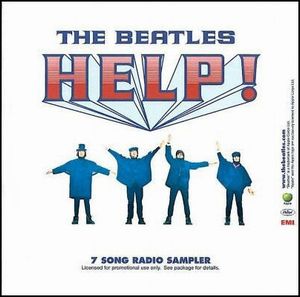 Around November 6th, 2007, Capitol released a “7 Song Radio Sampler” in promotion of the latest DVD release of their movie “Help!” All seven Beatles songs from the film were contained on this handsomely packaged disc, including “I Need You.” Around November 6th, 2007, Capitol released a “7 Song Radio Sampler” in promotion of the latest DVD release of their movie “Help!” All seven Beatles songs from the film were contained on this handsomely packaged disc, including “I Need You.”
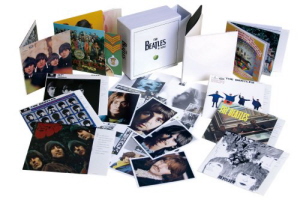 For those enthusiasts who are eager to hear that original mono mix made in 1965, it finally saw an American release on the CD box set “The Beatles In Mono” on September 9th, 2009. Not only was the original mono mix included but the original Norman Smith stereo mix of 1965 was added as a bonus. The vinyl edition of this box set was first released on September 9th, 2014. For those enthusiasts who are eager to hear that original mono mix made in 1965, it finally saw an American release on the CD box set “The Beatles In Mono” on September 9th, 2009. Not only was the original mono mix included but the original Norman Smith stereo mix of 1965 was added as a bonus. The vinyl edition of this box set was first released on September 9th, 2014.
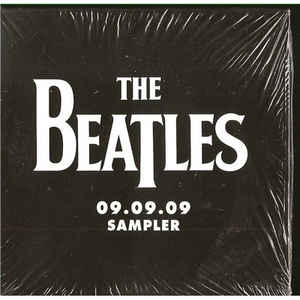 Also released back on September 9th, 2009, as a promotion for the remastered Beatles catalog, the "09.09.09 Sampler" was distributed to retailers and radio programmers, George's "I Need You" being featured therein. Also released back on September 9th, 2009, as a promotion for the remastered Beatles catalog, the "09.09.09 Sampler" was distributed to retailers and radio programmers, George's "I Need You" being featured therein.
In promotion of the 2014 box set titled "The US Albums," a limited release 25-song sampler CD was released on January 21st, 2014 containing the mono mix of "I Need You."
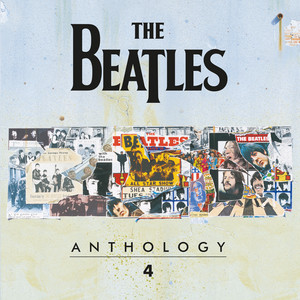 On November 21st, 2025, "Anthology 4" was released on both CD and vinyl, this also being made available within the "Anthology Collection" box set on CD and vinyl. "Take one" of "I Need You" as recorded at EMI Studio Two on February 15th, 1965, as detailed above, was included within these new releases. On November 21st, 2025, "Anthology 4" was released on both CD and vinyl, this also being made available within the "Anthology Collection" box set on CD and vinyl. "Take one" of "I Need You" as recorded at EMI Studio Two on February 15th, 1965, as detailed above, was included within these new releases.
Live Performances
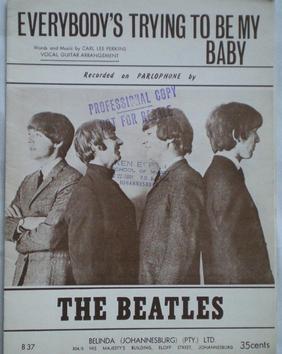 Even though George Harrison had two new compositions released by the end of summer 1965, they didn’t think to include either “I Need You” or “You Like Me Too Much” as George’s vocal contribution in their live concerts that year. Their American tour of 1965 still featured their rendition of Carl Perkins’ “Everybody’s Trying To Be My Baby,” while their December British tour featured George’s newly written “If I Needed Someone.” Even though George Harrison had two new compositions released by the end of summer 1965, they didn’t think to include either “I Need You” or “You Like Me Too Much” as George’s vocal contribution in their live concerts that year. Their American tour of 1965 still featured their rendition of Carl Perkins’ “Everybody’s Trying To Be My Baby,” while their December British tour featured George’s newly written “If I Needed Someone.”
Conclusion
 Many fans will be quick to point out that for the first few years of George’s songwriting career he tended to focus primarily on either dark subjects or negative aspects of relationships. “Don’t Bother Me” certainly falls into this category, as well as “If I Needed Someone,” “Taxman” and the sneering “Think For Yourself.” Many fans will be quick to point out that for the first few years of George’s songwriting career he tended to focus primarily on either dark subjects or negative aspects of relationships. “Don’t Bother Me” certainly falls into this category, as well as “If I Needed Someone,” “Taxman” and the sneering “Think For Yourself.”
While his song “I Need You” does indeed depict the loss of a relationship, the sincerity displayed in the melody as well as George's vocal delivery and arrangement, right down to the weeping volume pedal guitar sighs, brings out the proper sentiment convincingly.
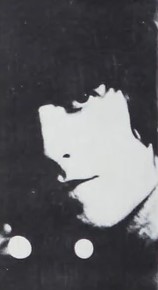 Other Harrison songs, such as “I Want To Tell You” and “Only A Northern Song” may appear to some as having been written with a haphazard “I don’t care” attitude to songwriting, but “I Need You” comes across as completely genuine and well thought out. His songwriting craft was yet to be developed fully by early 1965, but this song shows that, when he really tried, he could write like the best of them. Other Harrison songs, such as “I Want To Tell You” and “Only A Northern Song” may appear to some as having been written with a haphazard “I don’t care” attitude to songwriting, but “I Need You” comes across as completely genuine and well thought out. His songwriting craft was yet to be developed fully by early 1965, but this song shows that, when he really tried, he could write like the best of them.
Song Summary
“I Need You”
Written by: George Harrison
-
Song Written: December, 1964 - February, 1965
-
Song Recorded: February 15 & 16, 1965
-
First US Release Date: August 13, 1965
-
-
US Single Release: n/a
-
Highest Chart Position: n/a
-
British Album Release: Parlophone #PCS 3071 “Help!”
-
Length: 2:28
-
Key: A major
-
Producer: George Martin
-
Engineers: Norman Smith, Ken Scott, Jerry Boys
Instrumentation (most likely):
-
George Harrison – Lead and Backing Vocals, Rhythm Guitar (1950 Jose Ramirez Guitarra de Estudio), Lead Guitar (1963 Rickenbacker 360-12 Fire-glo)
-
John Lennon - Drums (1964 Ludwig Super Classic Black Oyster Pearl), Backing Vocals
-
Paul McCartney - Bass Guitar (1963 Hofner 500/1), Harmony and Backing Vocals
-
Ringo Starr – Acoustic Guitar - tapping (1962 Gibson J-160E), cowbell
Written and compiled by Dave Rybaczewski
|
IF YOU WOULD LIKE TO MAKE A DONATION TO KEEP THIS WEBSITE UP AND RUNNING, PLEASE CLICK BELOW!
|